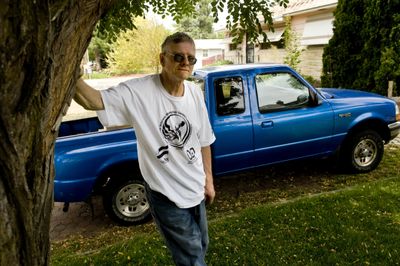A great deal for old wheels
Car owners and dealers are hopeful as ‘cash for clunkers’ program begins

David Lausche is doing the math.
Miles per gallon. Trade-in values. Four cylinders versus six.
He’s hoping he can come up with the right answer: a new truck, with a $4,500 savings courtesy of the federal government’s new “cash for clunkers” program. The program, which took effect Friday, offers new-car buyers credits of $3,500 or $4,500 if they trade in older cars for more fuel-efficient models.
Lausche is considering whether to buy a V-6 engine – which would only qualify him for the $3,500 price break – or go for the smaller engine and get another thousand off.
“If we go to the smaller engine, we might increase our mileage by at least 5 or 6,” said Lausche, who wants to trade in his 1998 Ford Ranger for a new one.
Car dealers, suffering through one of the worst slumps in memory, hope the program drives more business their way. Many dealers have been sweetening the pot with added incentives, such as Chrysler’s pledge to match the federal price cut – essentially doubling any incentive a buyer might have. The $1 billion program is expected to put 250,000 new cars on the road by November.
“I think that it’s going to drive a ton of people in,” said Eve Knudtsen, owner of Knudtsen Chevrolet in Coeur d’Alene. “How many of those people qualify will be another thing.”
The basics of the program – intended to give a boost to lagging auto sales and to reduce auto emissions – have been well-known since President Barack Obama signed it into law a month ago. Buyers trading in operable cars that are up to 25 years old and get 18 mpg or worse can get a credit for buying new, more fuel-efficient cars.
But many of the details weren’t hammered out until Friday, including how dealers would record the transactions and get paid, how they would dispose of the trade-ins to ensure they’re taken off the road, and other guidelines.
Russ Spalding, owner of Spalding Auto Parts, said he’s been hearing from dealers interested in determining salvage values and disposing of “clunkers.” His Web site has set up a tool for dealers to use, and he expects the act to send business his way – though he’s not sure how much.
Under the program, the car’s engines must be destroyed, but plenty of other parts could be resold, he said.
“I’ve been talking to a lot of different dealers in town today, trying to determine exactly what the program’s about,” Spalding said. “There’s a lot of questions about how to do it. … What parts can I sell on the vehicle? What parts can I recycle? These are some of the things we’re wading through right now.”
Dealers have been eager to get a piece of the program. Hallmark Hyundai in the Spokane Valley, for example, began offering buyers the terms of the program before it even formally took effect. Co-owner Denny Waltermire said his dealership has made about a dozen sales that he hopes will qualify retroactively for the program – but that if they don’t, customers still get the deal.
“We made a decision to go ahead,” Waltermire said. “If we give you $4,500, you already have your $4,500. We are assuming the risk.”
The new federal rules published Friday seem to be in Waltermire’s favor. They said the program applies to sales starting July 1.
The program has attracted critics, who say the rules would allow for the sale of plenty of inefficient SUVs and trucks, and don’t go far enough to reduce emissions. Some auto industry analysts have also predicted that the program won’t have a significant impact on sales this year.
Still, some buyers and sellers are hoping it has a positive effect on their bottom lines.
Pat Harris’ family might try to trade in two “clunkers.” Her husband had already essentially made a deal to trade in a 1986 Ford F-250 for a new Mini Cooper – but the Seattle dealer was waiting until the rules were finalized before making it official, she said.
She’s also interested in trading in her 1986 Mercury Villager for a Prius, but has had trouble finding the model she wants. If she can find the right one, she’d also be able to take advantage of a state sales tax break on cars getting more than 40 mpg.
Harris paid close attention to the “cash for clunkers” program as it moved through Congress and was eager to participate.
“I think it’s a great deal,” she said. “I really do – environmentally, too. I’m sure my truck puts all kinds of stuff into the air. You can see it when you turn it on.”